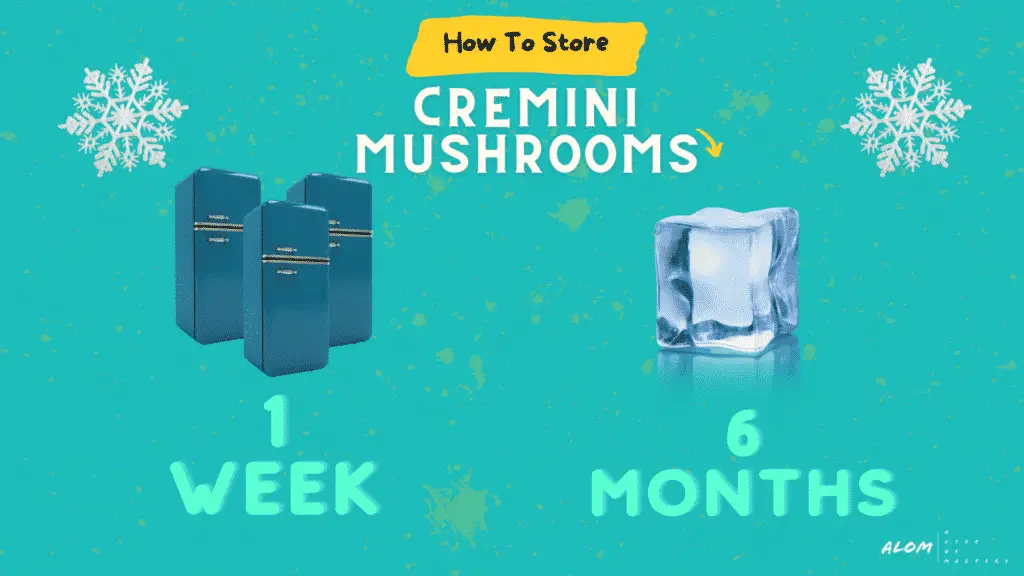Table of Contents
Sometimes called Italian mushrooms, the distinguishing characteristic of a Cremini mushroom is its tell-tale brown color size. Sitting somewhere between white button mushrooms and portabello mushrooms, the only thing that separates these from each other is how long they spent in the ground before they were picked. Because if you didn’t know, they are the exact same mushroom!
So the next time you are walking past the newest burger restaurant to flaunt their signature burger with portabello mushrooms, remember that they are the exact same mushrooms you have been buying for years. Just a little older and bigger.

What Are Cremini Mushrooms?
Typical white button mushrooms are picked very early in their lifetimes, hence their white color. However, when grown naturally, these ‘brilliant white’ mushrooms are typically a lot darker than you would recognize. Years of cultivation and growing processes have conditioned us to expect perfect, white-button mushrooms when that shouldn’t be the case.
The older brother to a cremini mushroom is the portabello mushroom – a giant in the mushroom world and one that has spread around the globe for its meaty taste and large size. There is a reason that cremini mushrooms are called ‘baby portabello’ mushrooms, and it’s because if they had spent a little longer in the ground they would have become one!
But since they were picked somewhere in the middle, they have the best of both worlds. A mild-moderate brown color gives them a distinctly aged mushroom appearance, whilst their shape and size make them perfect for smaller recipes. Their youth brings with them a firmer texture than typical white button mushrooms that resist the urge to become soggy when cooked.
How To Store Cremini Mushrooms

Storing cremini mushrooms is a fairly easy task – just make sure you keep them in the packaging you bought them in, or failing that, a loose paper bag. Don’t store them in your crisper draw! They will absorb all the moisture from around them and become a soggy mess way before you get a chance to use them. Isn’t it bizarre that despite being mainly water, they shouldn’t get any wetter?
As for the freezer, your mileage will vary. Since they are mostly water, that moisture inside them will freeze and expand – meaning that when it comes time to defrost them they will be a little mushy and soggy. Not to fret though, another way of freezing mushrooms is to cook them first. This helps to remove some of the already existing moisture, as well as break down the mushroom in a more controlled way so that when it does expand there is space for the moisture to freeze.

FAQs
Do I have To Clean Them First?
Did you buy them from a farmers’ market? Then 100% yes, and clean them well! We all know what they use for fertilizer in the fields, don’t we? But if you bought them from a store, then it is up to you! Any dirt left on the mushrooms will have been sterilized before they made it to your shopping trolley and so the health hazards disappear. But, if you don’t want little bits of dirt swimming on the top of your soups and broth, then maybe give them a quick check with your fingers.
Avoid washing them with water, as we all know that the enemy of mushrooms, is moisture.
Which Mushroom Is Best?
It depends on what you are using them for, and what you need them to do. Firm mushrooms work exceptionally well in sauces and stews, but not so well as a breakfast side. Find a mushroom that matches what you are going to use it for and start exploring similar types.
What Should I Look For In A Good Cremini Mushroom?
You should look for mushrooms that are about 2 inches in size, this shows that they have been given enough time to grow into their cremini age range, whilst not overshooting the mark into portabello territory. Making sure they feel dry and firm can be a great way to make sure that the mushroom you have in your hand is as fresh as you can expect outside a farmers’ market; make sure there are no dark spots on the outside of the mushroom either as this can be an indication that it may be an older mushroom.










